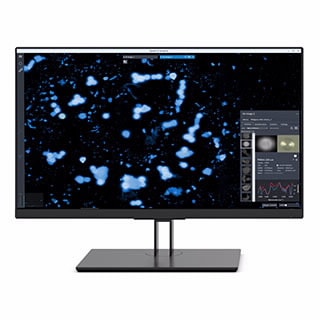
Agilent Clarity Software
- LDIR Software
Request a Quote
Product Details
- Fast, easy method creation
- Spectral analysis including mathematical functions (e.g., variance, addition, averaging) and spectrum transformations
- Create and search libraries for fast and reliable compound identification
The Best Technologies for Microplastics Analysis
Comparing laser direct infrared (LDIR) imaging, GC/MS, FTIR, and Raman imaging as technologies for the analysis of microplastics in the environment and food chains.
Learn More- Key Literature
-
Analyzing Microplastics
Using the Agilent 8700 Laser Direct Infrared Imaging system for fast and automated analysis of microplastics in environmental samples
- Brochures
- English
- 22 Aug 2019
- 327.56 KB
Rapid, Large-Area, Analysis of Microplastics from Plastic Bottles Using LDIR
Microplastics derived from polyethylene terephthalate (PET) bottles were analyzed on infrared reflective glass slide and gold-coated membrane filters using the Agilent 8700 Laser Direct Infrared (LDIR) chemical imaging system.
- Application Notes
- English
- 19 Oct 2022
- 3.21 MB
Characterization of Microplastics in Environmental Samples by Laser Direct Infrared Imaging
The chemical composition of microplastics was identified with the Agilent 8700 Laser Direct Infrared (LDIR) chemical imaging system. Ease-of-use and simplicity of creating a library with the Clarity LDIR instrument control software was also shown.
- Application Notes
- English
- 24 Oct 2022
- 7.49 MB
- Application Notes
- Brochures
- Catalogs
- Primers
- Technical Overviews
- White Papers
- Supplemental Information
-
Agilent Molecular Spectroscopy Software Support Lifecycle Policy
Check the lifecycle status for revisions of the Agilent molecular spectroscopy suite of software products, so you can plan and maintain an active support status.
More help is just a click away
If you didn't find what you need, try these resources or contact a specialist
New Agilent Community Spectroscopy User Groups for TRS100 and 8700 LDIR
The Agilent Community, an online customer support and forum space, has expanded to include two specialized user groups focusing on transmission Raman spectroscopy and the 8700 LDIR for microplastics analysis. These groups allow for dedicated spaces for conversations and knowledge sharing.
- 11 Sep 2023
Webinar: Challenges in Microplastics Analysis—From Routine Laboratory Testing to Pushing the Boundary on Particle Sizes
There are many challenges in the fast-developing field of microplastic analysis. In this webinar, we will hear from two speakers addressing quite different challenges, but nonetheless, challenges faced by many. The first speaker, Dr Gbotemi Adediran from the UK Centre for Ecology and Hydrology, will explore the opportunities and challenges in analyzing sub-micron-sized (< 5µm) microplastics analysis by LDIR. In the second presentation, Dr Julia Jaeger from Eurofins Environmental Testing—Australia & New Zealand will explore advancements and challenges related to the application of LDIR for routine microplastic analysis.
- 06 Sep 2023
LDIR Enables Accurate Microplastic Characterization in Infant Formula
Reports of the omnipresence of microplastics have mainly focused on their presence in the environment, but there is a growing interest in investigating the health impacts of microplastics. Many people would assume that infants' exposure to microplastics would be limited. However, infant formula was found to be a possible exposure pathway. In a recent application note, the 8700 LDIR Chemical Imaging System was used to accurately identify and quantify microplastics in infant formula. The study also shows the importance of quality control in microplastics analysis. Read the application note.
- 01 Jun 2023